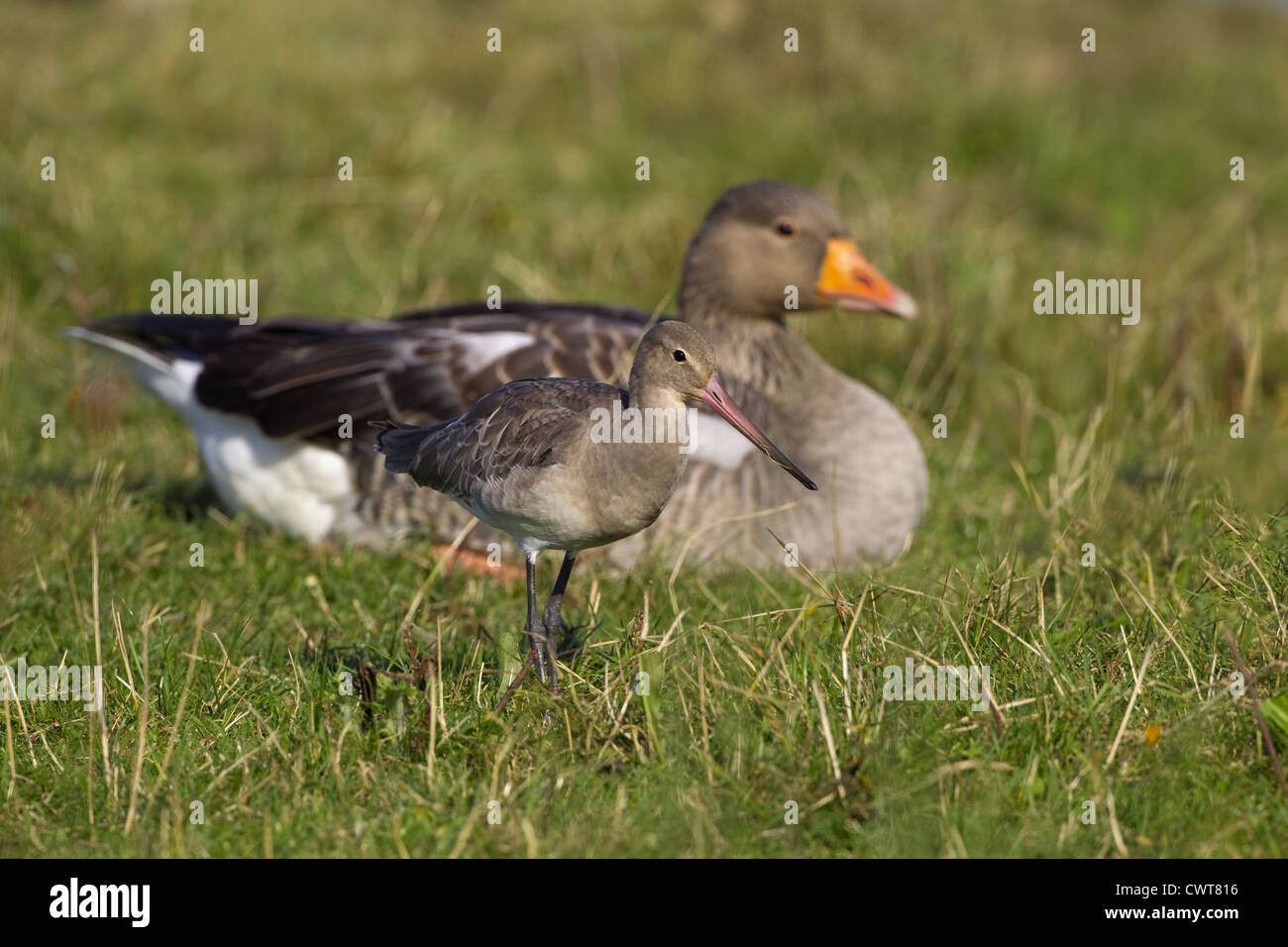Black-tailed Godwit Limosa limosa feeding in wet grassland with geese

Image details
Contributor:
Ernie Janes / Alamy Stock PhotoImage ID:
CWT816File size:
45.7 MB (1.4 MB Compressed download)Releases:
Model - no | Property - noDo I need a release?Dimensions:
4896 x 3264 px | 41.5 x 27.6 cm | 16.3 x 10.9 inches | 300dpiDate taken:
3 September 2012Location:
Norfolk England UKMore information:
Black-tailed godwits are large wading birds. In summer, they have bright orangey-brown chests and bellies, but in winter they’re more greyish-brown. Their most distinctive features are their long beaks and legs, and the black and white stripes on their wings. Female black-tailed godwits are bigger and heavier than the males, with a noticeably longer beak (which helps the sexes to avoid competing for food with each other). They’re very similar to bar-tailed godwits, which breed in the Arctic. Black-taileds have longer legs, and bar-taileds don’t have striped wings. As the names suggest, the tail patterns are different, too. Estuaries and coastal lagoons are the best places to look for black-tailed godwits at almost any time of year, though they also visit wetland sites inland. We also have a small, vulnerable breeding population, on a select few wet meadows and marshes; they migrate to west Africa for winter. Birds from Iceland spend winter in the UK.